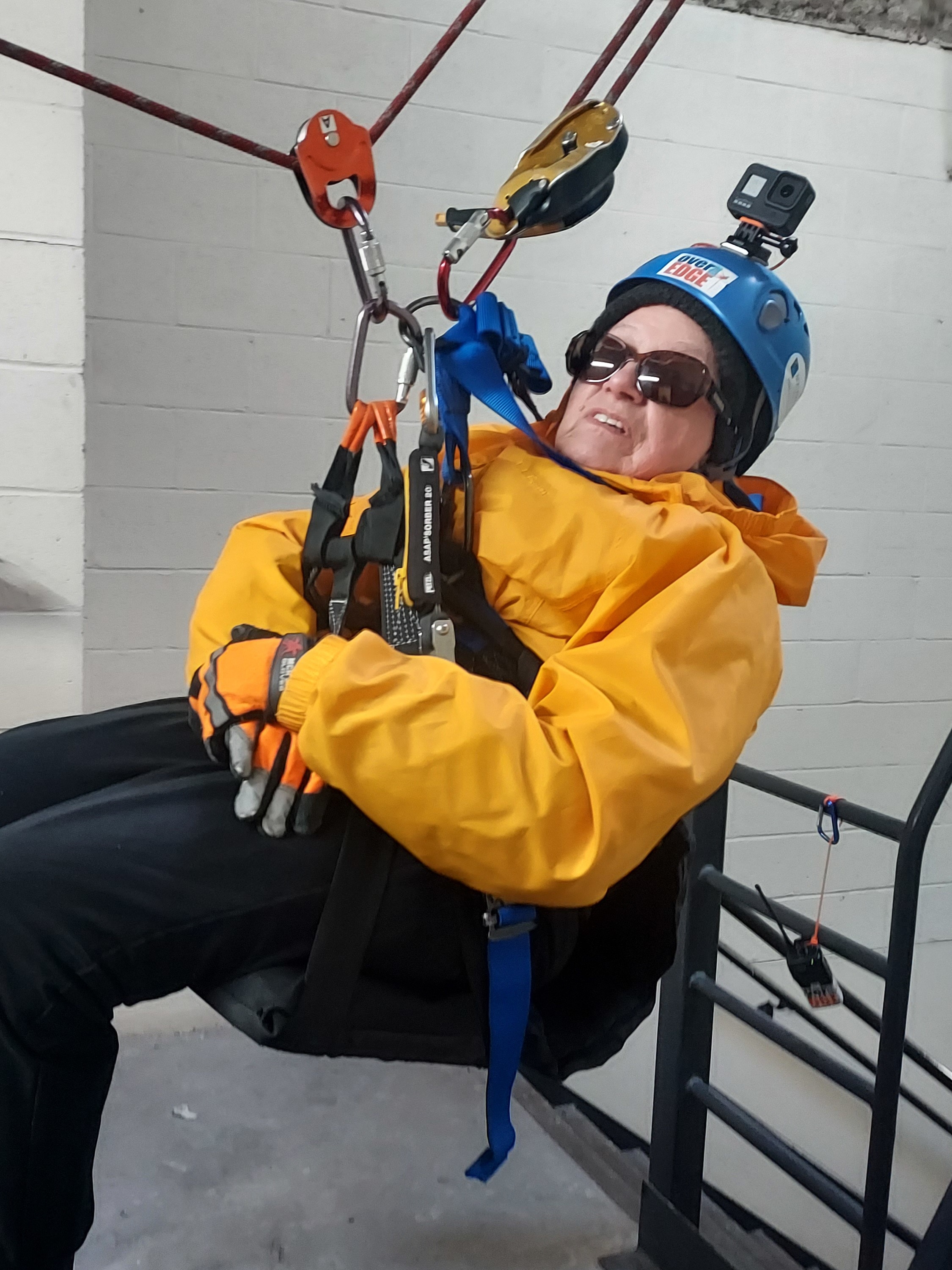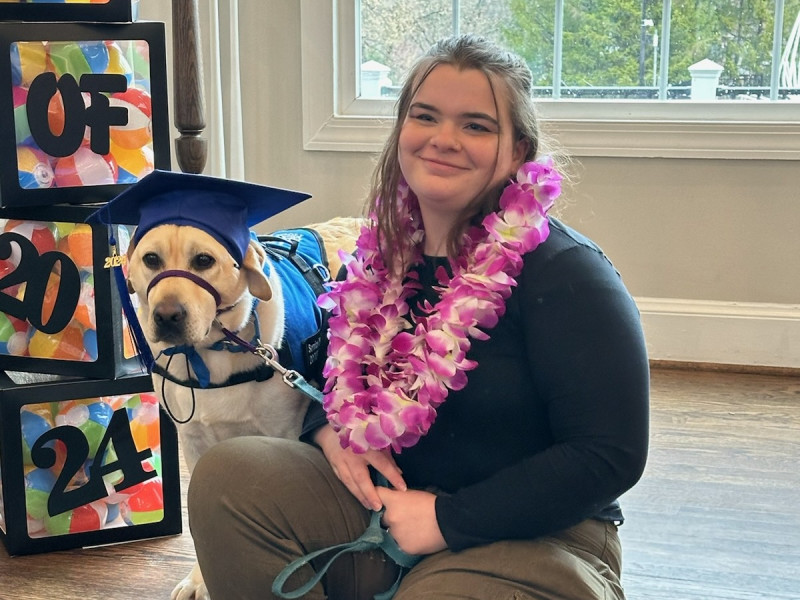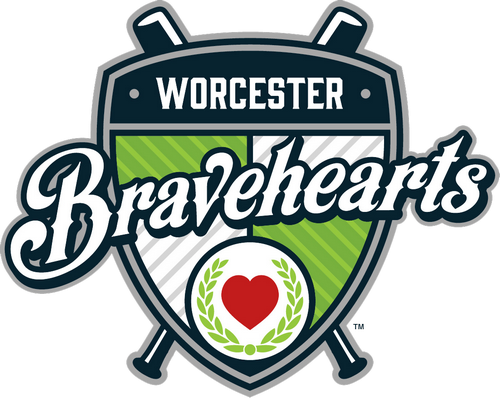Are you ready to go Over The Edge for service dogs & kids?
November 15, 2025 - Canines for Disabled Kids invites you to rappel 9 stories from the roof of 120 Front Street, Worcester, MA.
Our 5th annual rappel gives you the rare (annual) chance to experience the thrill of rappelling a building in downtown Worcester while raising awareness & funds to support service dogs & the independence they bring to kids (& adults) with disabilities.
This challenge, like most, is best taken one step at a time. Set your personal fundraising goal - the goal defaults to $1000 but you can adjust it. Talk to your friends and family about what you are doing, invite them to come watch you, ask them to support you. When it is your turn to rappel, trust the tools to keep you safe and take one step at a time - just like our incredible kids do with their service dogs every day.
Follow us on social media for more!

Steps on How to Join
1) Click Join
2) Select to be an Individual Participant
3) Input 110 feet for your Rappelling Goal (this helps people understand how far you will go to support kids and service dogs)
4) Select T-shirt size (or select no shirt to provide additional support to service dog partnerships)
5) Add your ticket
6) Select if you would like to be part of a Team (create a new team, join an existing team, or click no thank you)
7) Personalize your page
8) Have fun reaching your goals!

Donations
Every Dollar Makes a Difference

A Persistent Message
How long does it take for someone to find their best friend? Could it take six months? Could it possibly be a year? In the case of this family, it took them over four-and-a-half years to find Dunkin. Dunkin is Grace’s service dog and best friend. Grace’s father, John, started the process. He had started the search back in 2019 while stationed, as a member of the U.S. Navy, in San Diego. John first started by seeing if there were any service dog organizations that worked with military families. Unfortunately, the organizations offered service dogs only to veterans. After reaching out to 30 organizations, John finally found one. This organization happened to be on the East Coast. They applied and waited a year and a half. They finally got an acceptance email from the organization. That same day they got a call and were told they were not accepted. The organization did not give a reason, but said they could reapply in a year. When that year hit, they reapplied. This time they heard back quickly: they were turned down again. This was because the organization could not match service dogs with teens due to legal reasons. This time the organization was able to connect they with Kristin Hartness. Kristin works for Canines for Disabled Kids (CDK). Since the Grace’s family was now on the East Coast, Kristin was able to connect them with Healing House. Another piece of good news was Healing House was only 150 miles away. Within six months of applying, Grace was matched with Dunkin. Together Grace and her family met a few of the potential service dogs before meeting Dunkin. One of the dogs just loved everyone. That one was a no. When Dunkin and Grace met, they connected instantly. Dunkin climbed up and put his paws on Grace’s shoulders, as if he was giving her a hug. That is done as a deep pressure response to her disabilities. Even though he has been with Grace for only about six months, Dunkin has had a big impact on her. Dunkin follows Grace from one room to another. Dunkin also helps Grace cope with Bipolar Disorder and Post Traumatic Stress Disorder. If they are out somewhere and it gets too crowded, Dunkin will go between Grace and the other person. Dunkin will also lead Grace out of that area. “Before she wouldn’t even go to Walmart,” Tammie, Grace’s mother, said. “Now they go in and out of those aisles. He just helps her get through that part of life.” The next big milestone will be Grace’s taking Dunkin to school. The school, which has never had a service dog, needs to learn how to accommodate Grace and Dunkin. Kristin Hartness will travel to help educate the school—at no cost to the family. “We don’t understand all the legalese of the ADA and service dogs and she advocates for that,” said John. “She’s been fantastic.” “I’m hoping that one day there will be more organizations out there that will help with children,” John said. Even though they had to wait quite a while, as they look back, they realize it was definitely worth it. “You have to potentially go through a lot of nos before you get a yes. You just have to keep trying and trying and trying,” John said.
$1,000
Frequently Asked Questions
What time will I rappel?
Our first rappelers will have an arrival time of 7 am with a rappel time of 8 am. We will continue to rappel into the midafternoon. All participants will be sent their rappel time (and arrival time of one hour prior to their rappel) a few days prior to the event.
Can I rappel with a friend/spouse/coworker etc?
Yes! There are two ropes set-up so two people can rappel at the same time. Groups of about 6 people are geared up and sent to the roof for training together. If you have a partner or group of people who would like to be assigned the same rappel time, the best way to communicate that to us is to form a team when you register. You can also email info@caninesforkids.org to let us know.
Is there an age limit or weight limit to go Over The Edge for CDK?
Participants under 18 need to have waivers signed by a parent/guardian. All participants must be at least 100 lbs in order for the mechanisms to work properly. Participants must be less than 300 lbs. If you have any questions about accommodations that can be made for your specific needs/situation, please email info@caninesforkids.org








